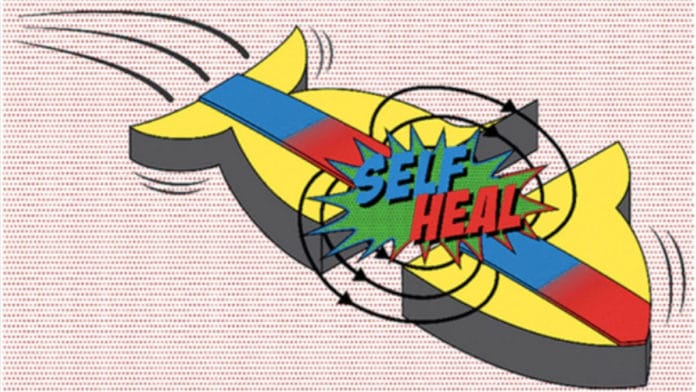Human bodies can heal themselves from many injuries, such as scratches, bruises, and broken bones, but giving similar abilities to artificial systems, such as robots, has proven extremely challenging.
Now, researchers from the University of California-San Diego have developed small swimming robots that can magnetically heal themselves on-the-fly after breaking into two or three pieces while carrying out any task. This method could help make tougher devices for an environmental or industrial clean-up.
The experimental self-healing robot is 2 cm long (about the width of a human finger) in the shape of a fish and consists of a conductive bottom layer, a rigid, hydrophobic middle layer, and an upper strip of aligned, strongly magnetic microparticles and a platinum tail.
In tests, when the researchers placed a swimmer in a petri dish filled with a weak hydrogen peroxide solution, the platinum reacted with the chemical to form oxygen bubbles that propelled the robot. They then cut the robot with a blade, and the tail kept moving around until it approached the rest of the body, reforming the fish shape through a strong magnetic interaction.
The result shows, the robot swimmers could also heal themselves when cut into three pieces – the swimming tail first joined up with one piece, and then the two merge with the other one – or when the magnetic strip was placed in different configurations. According to the researchers, the versatile, fast, and simple self-healing strategy could be an important step toward on-the-fly repair for small-scale swimmers and robots.
These kinds of small robots can swim through fluids and carry out useful functions, such as cleaning up the environment, delivering drugs, and performing surgery.
